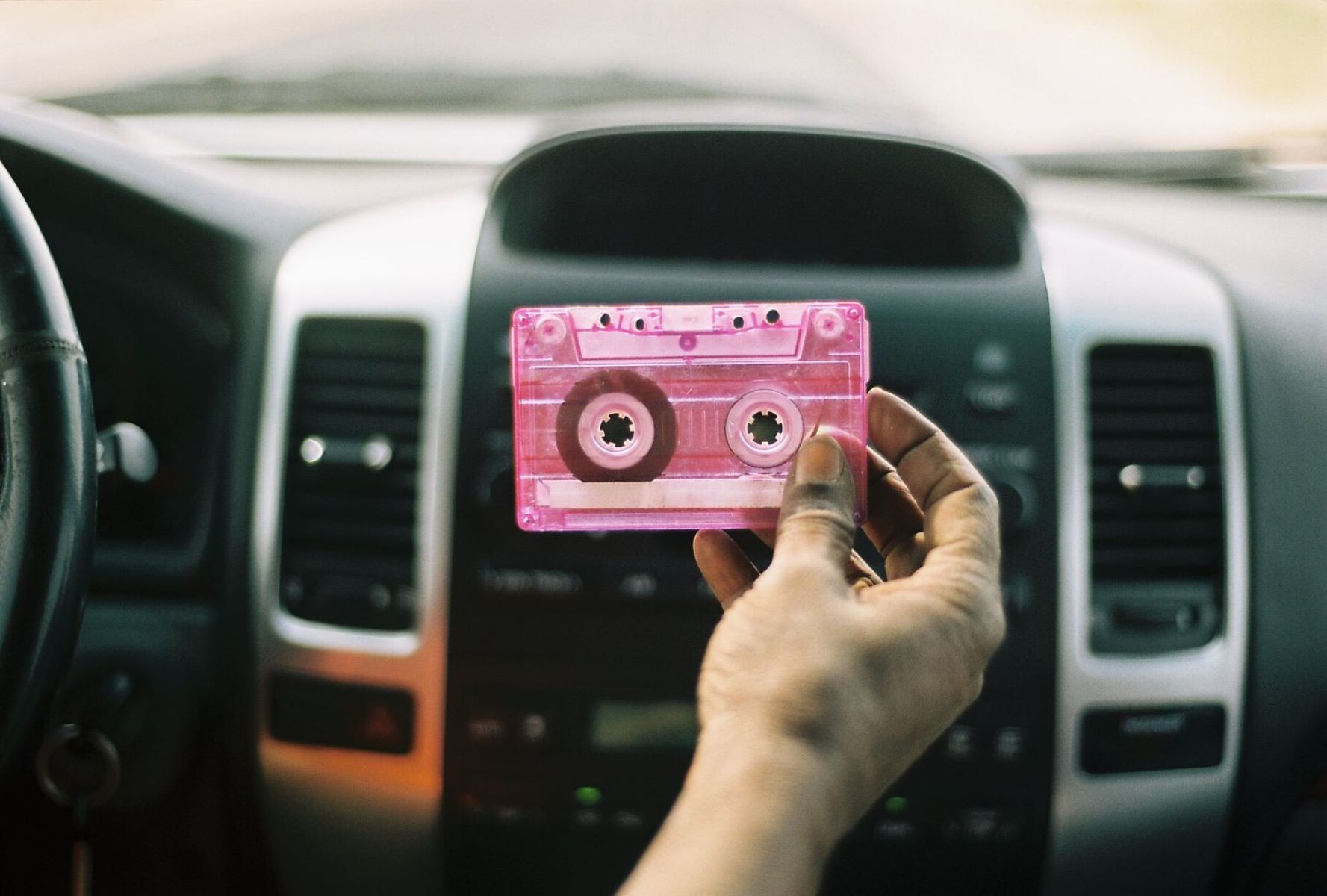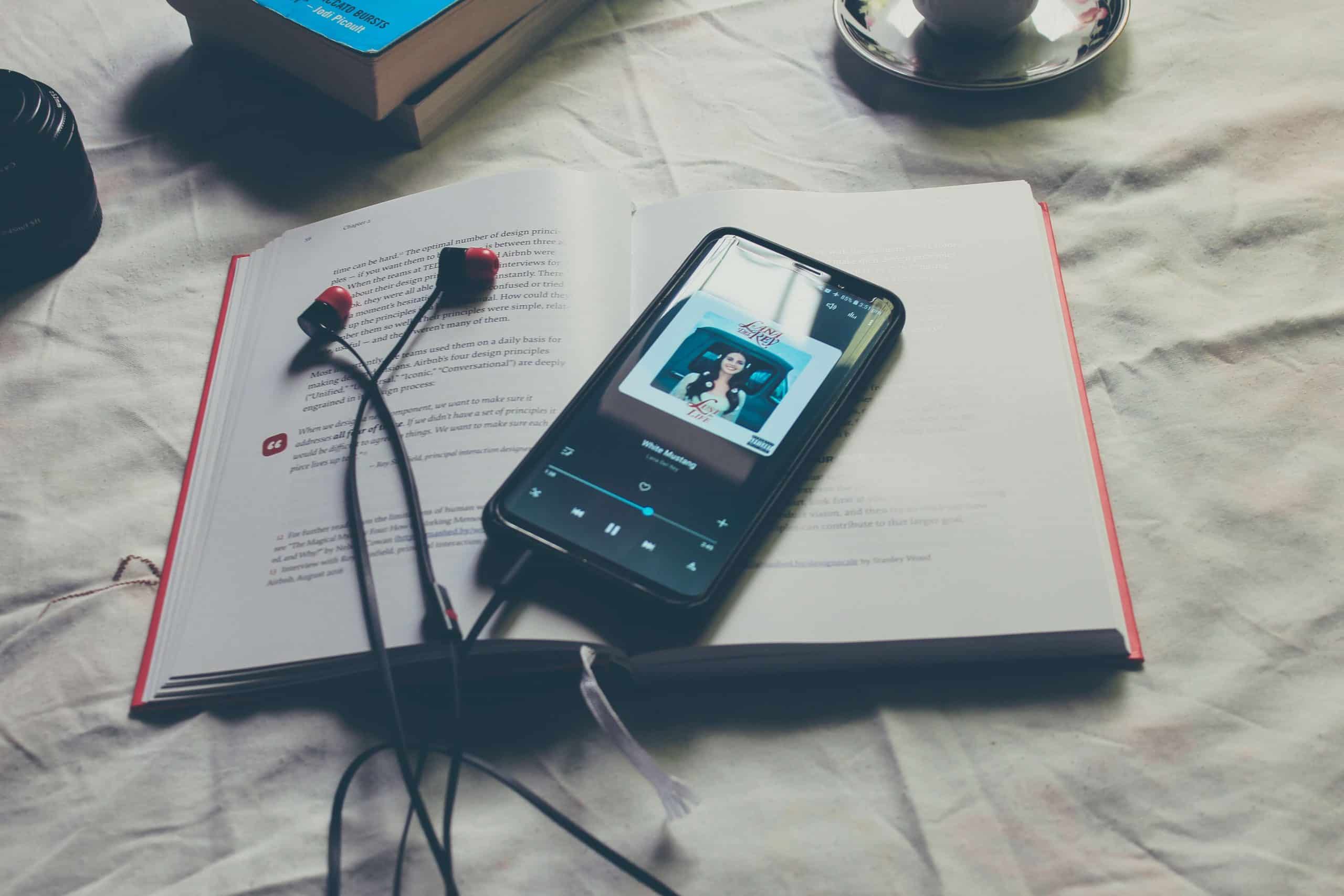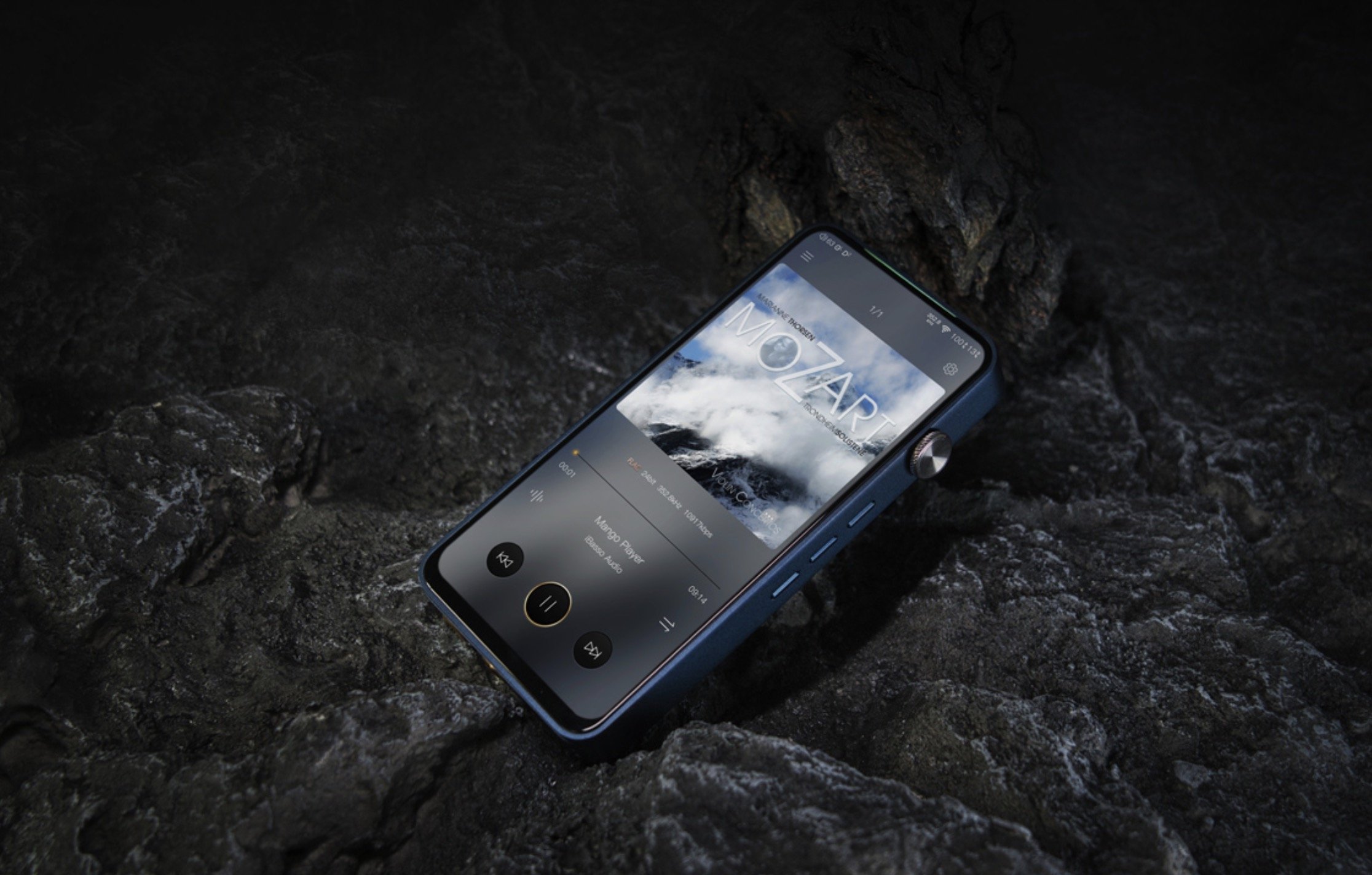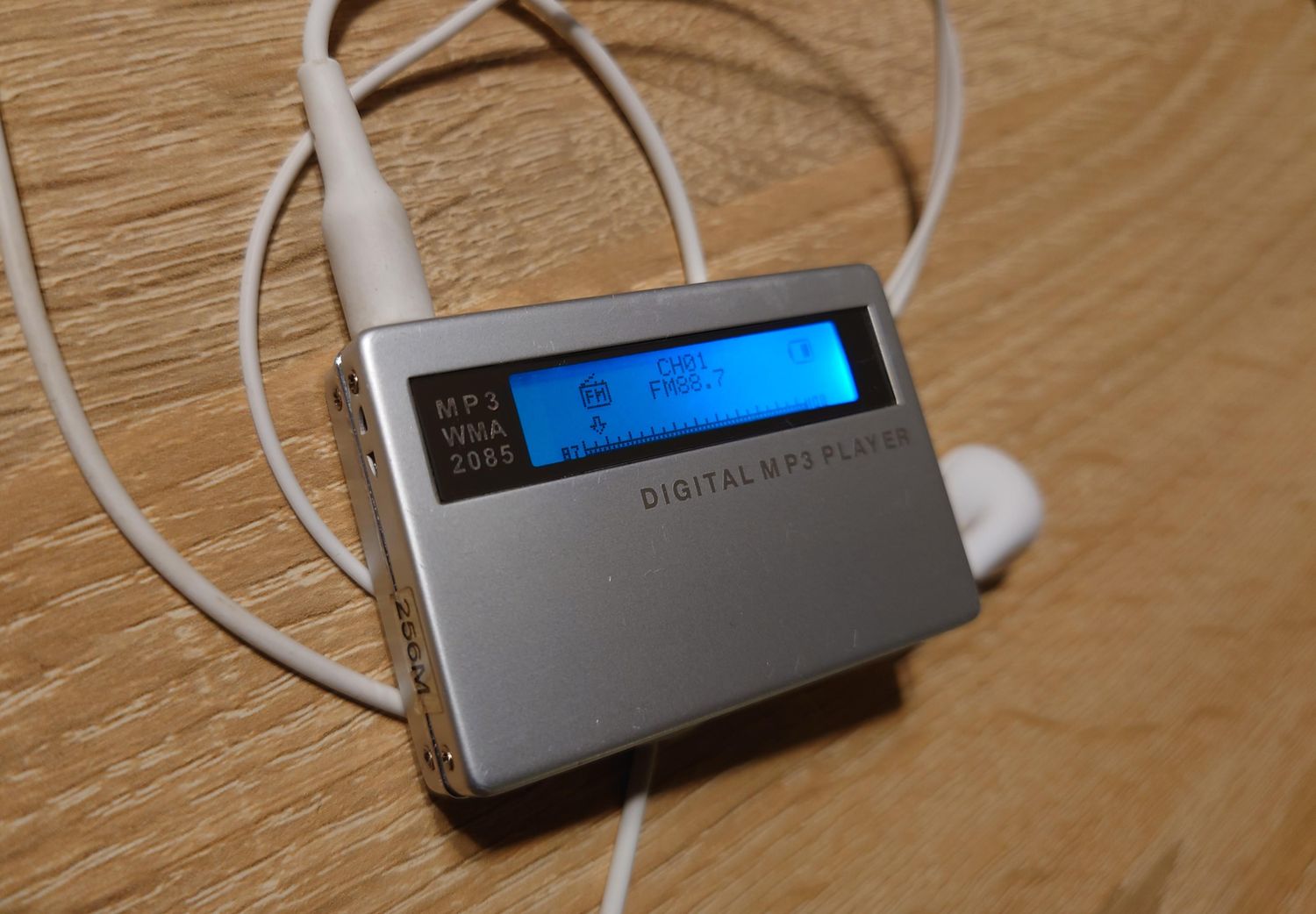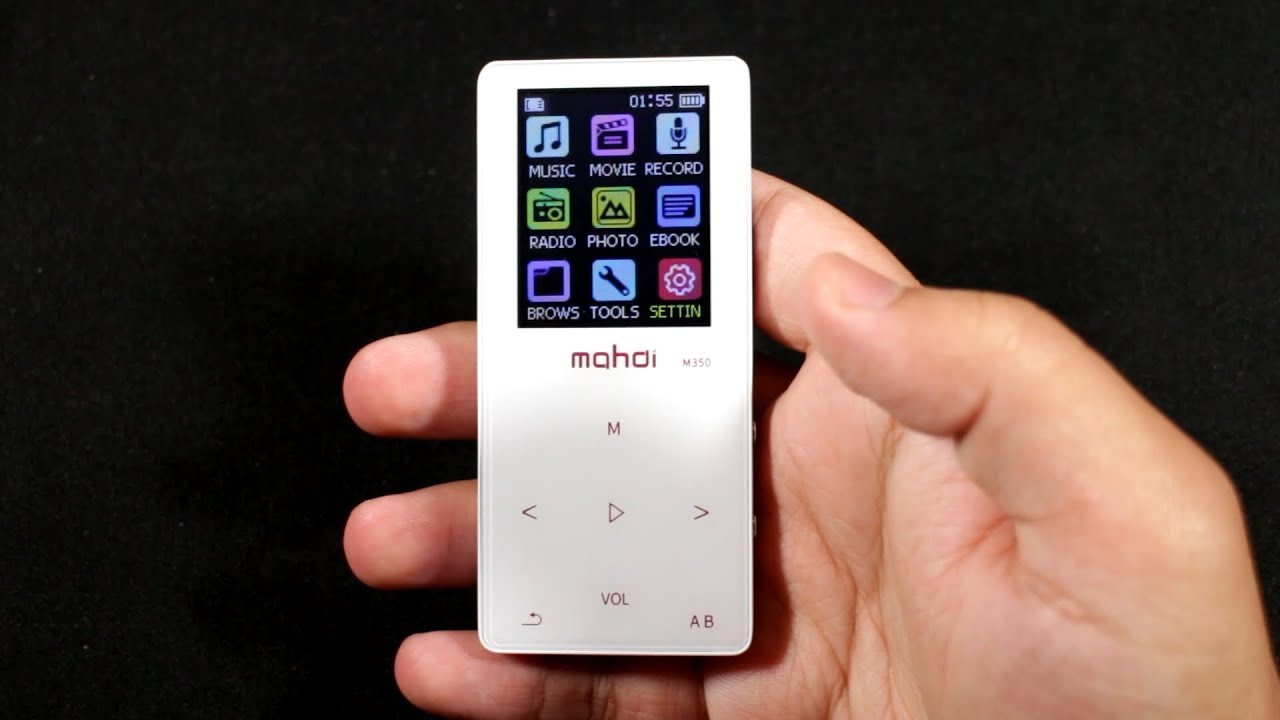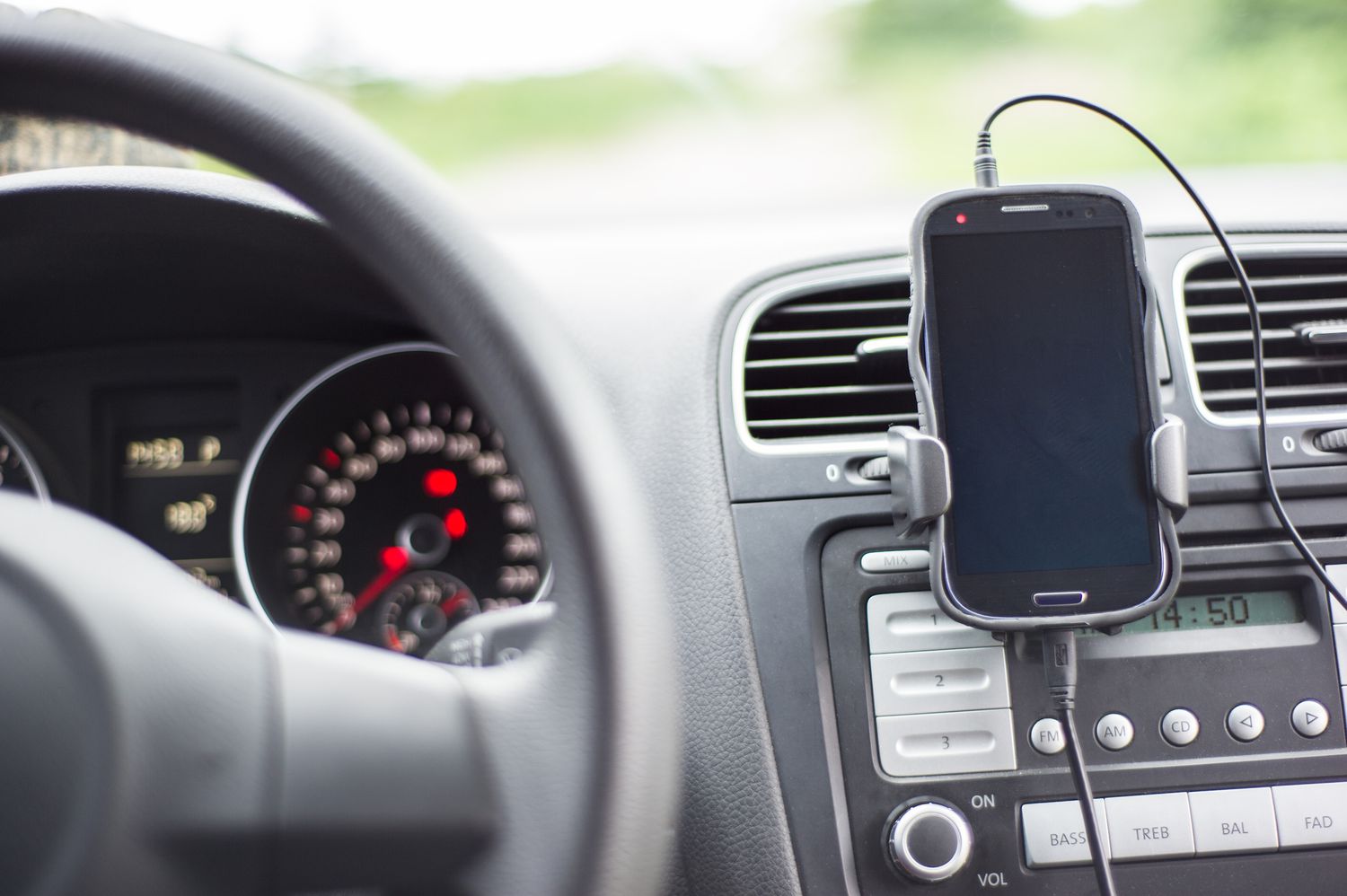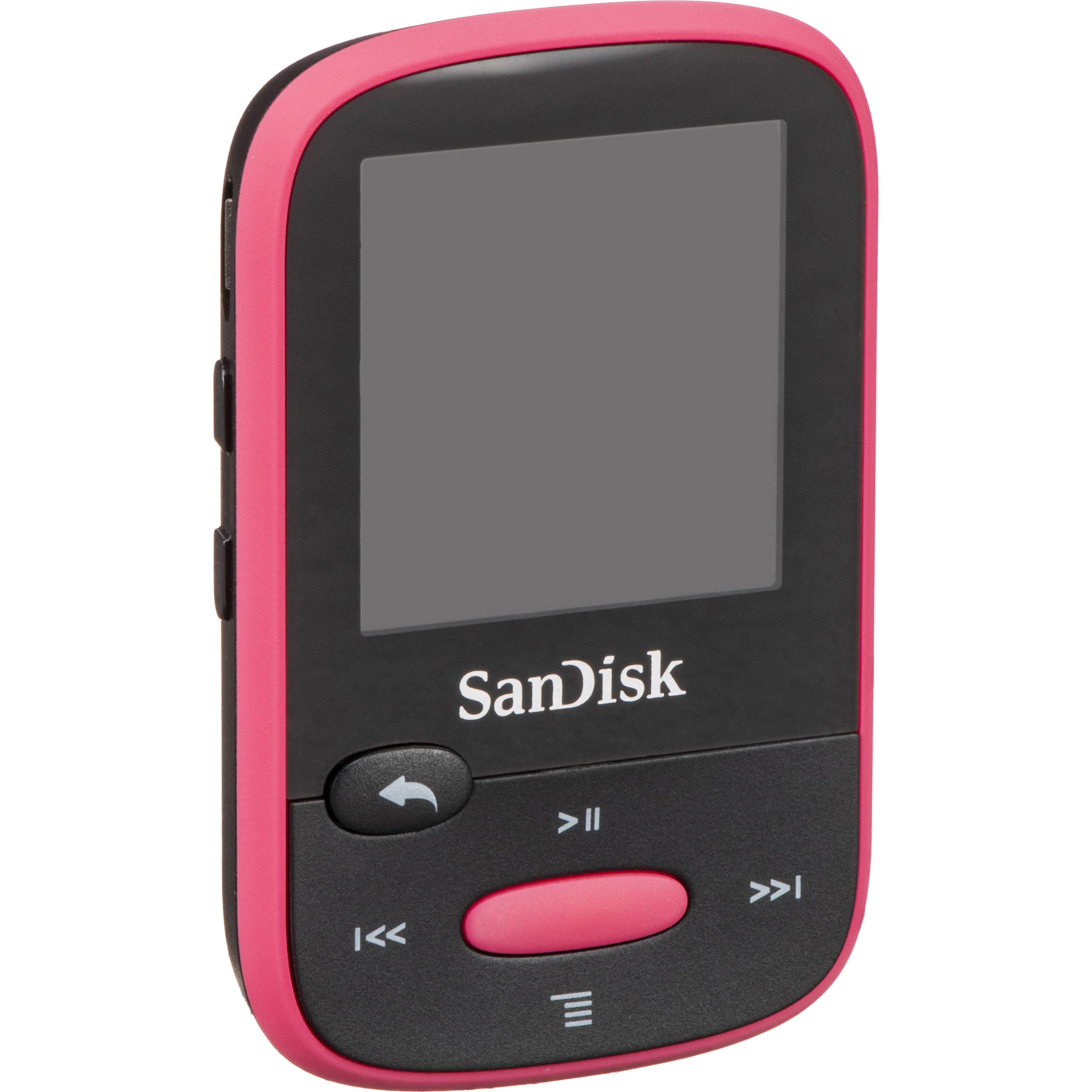Home>Production & Technology>MP3>How Does MP3 Player Work
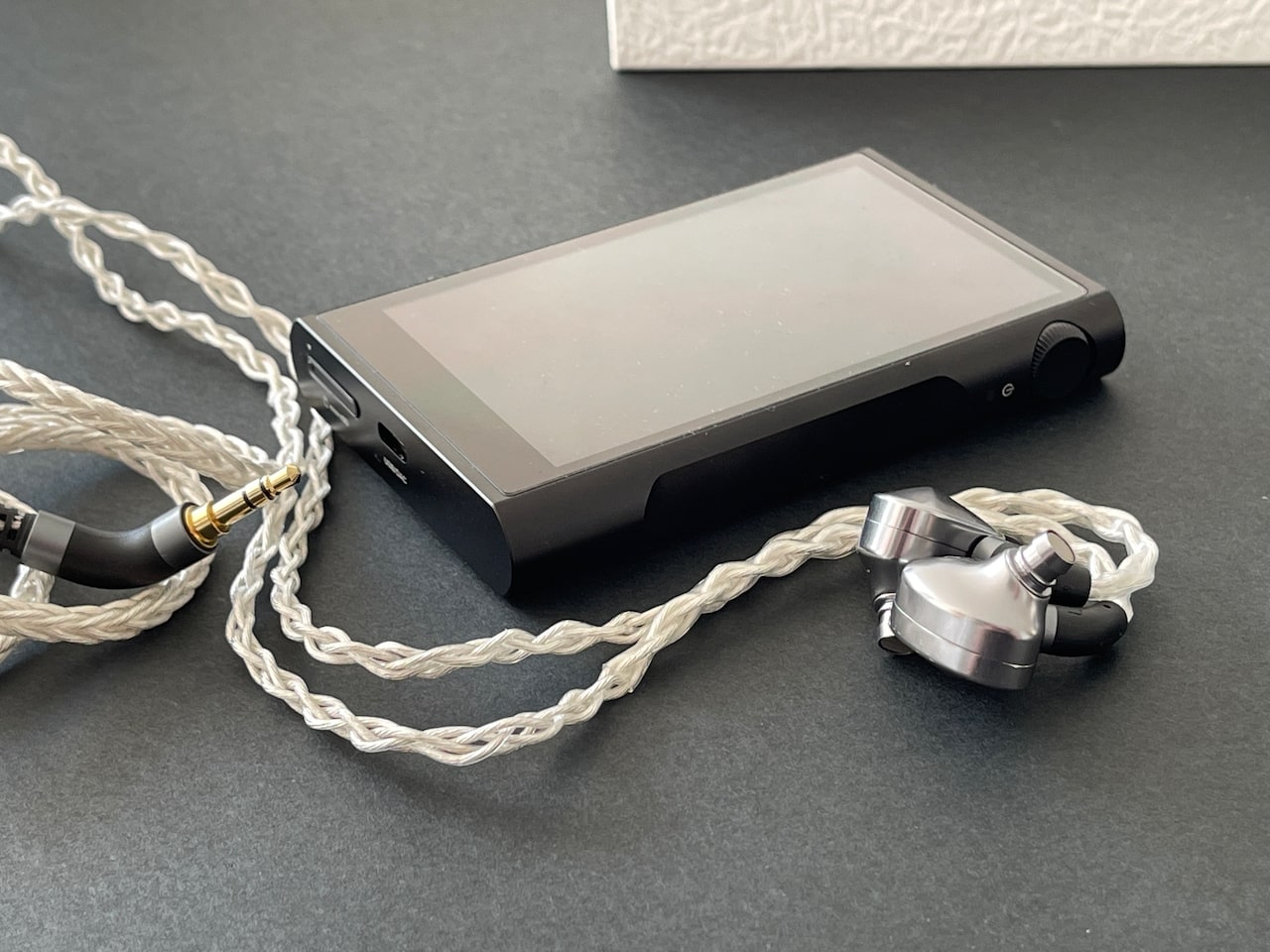

MP3
How Does MP3 Player Work
Modified: January 22, 2024
Discover the inner workings of an MP3 player and understand how MP3 technology revolutionizes portable music. Learn how the MP3 format compresses audio files without sacrificing quality.
(Many of the links in this article redirect to a specific reviewed product. Your purchase of these products through affiliate links helps to generate commission for AudioLover.com, at no extra cost. Learn more)
Table of Contents
Introduction
Welcome to the world of MP3 players, where music lovers can carry their entire music library in the palm of their hand. From the early days of portable cassette players to the rise of the compact disc, the evolution of technology has now brought us the MP3 player. This small device has revolutionized the way we listen to music, allowing us to enjoy our favorite tracks anytime, anywhere.
An MP3 player is a portable electronic device that is designed to play digital audio files in the MP3 format. The MP3 format, short for MPEG-1 Audio Layer 3, is a widely used audio compression standard that reduces the size of audio files without significantly affecting the audio quality. This compression allows music enthusiasts to store and carry thousands of songs on a single device.
MP3 players come in various shapes, sizes, and functionalities. Some are small and lightweight, perfect for on-the-go use, while others have larger screens and advanced features such as video playback and internet connectivity. Regardless of the differences, all MP3 players operate on the same basic principle – reading and playing digital audio files.
In this article, we will delve deeper into the components, technologies, and inner workings of MP3 players. We will explore how these devices store, compress, and play audio files, as well as the user interface and connectivity options that enhance the overall experience. So, put on your headphones and get ready to embark on a journey into the fascinating world of MP3 players.
Components of an MP3 Player
An MP3 player is a complex device that consists of several key components working together to deliver high-quality audio playback. Let’s take a closer look at each of these components:
- Processor: At the heart of every MP3 player is a central processing unit (CPU) or a microprocessor. This component is responsible for executing various tasks, such as decoding audio files, managing user inputs, and controlling the overall functionality of the device.
- Memory and Storage: MP3 players have both built-in memory and external storage options. The built-in memory stores the device’s operating system and firmware, while also providing space to store a certain number of audio files. Some MP3 players also offer expandable storage through memory cards or flash drives, allowing users to add more music to their collection.
- Headphone Jack: The headphone jack is where you can connect your headphones or earphones to the MP3 player. It allows you to privately listen to your music without disturbing others.
- Display Screen: Many MP3 players feature a small display screen that shows essential information such as the current track, artist, album, and playback settings. This screen may be monochrome or color, depending on the model.
- Navigation Controls: Most MP3 players have a set of navigation controls, including buttons, touchpads, or touchscreens, that allow users to browse through music libraries, select tracks, adjust volume, and access various settings.
- Audio Codec: An audio codec is the software or hardware component responsible for decoding and encoding audio files. The codec translates the compressed MP3 file format into analog audio signals that can be played through the device’s speakers or headphones.
- Battery: To power the MP3 player, it requires a rechargeable battery. The battery capacity determines the device’s playback time, and it is essential to choose a player with a long-lasting battery, especially for extended use.
- Connectivity Options: MP3 players often come with various connectivity options to transfer music files, charge the device, and connect to other devices. These can include USB ports, Bluetooth, Wi-Fi, and even wired connections like auxiliary ports or docking stations.
The combination and quality of these components play a crucial role in determining the performance, functionality, and user experience of an MP3 player.
Memory and Storage of MP3 Files
The memory and storage capacity of an MP3 player determine how many songs you can store and enjoy on your device. MP3 players typically have two types of memory: built-in memory and external storage options.
The built-in memory is the internal storage capacity of the MP3 player. It is where the device’s operating system, firmware, and preloaded applications are stored. The built-in memory also provides space for storing a certain number of audio files, depending on the player’s specifications. This storage capacity is usually measured in gigabytes (GB) or terabytes (TB).
In addition to the built-in memory, many MP3 players offer external storage options. These can include memory cards such as SD cards or microSD cards, or even USB flash drives. These external storage options allow users to expand the storage capacity of their MP3 player, adding more music to their collections. It’s worth noting that not all MP3 players support external storage, so it’s important to check the specifications before purchasing.
The storage capacity of an MP3 player depends on various factors, including the quality and format of the audio files. MP3 files are known for their ability to compress audio without significantly compromising quality. A typical MP3 file can be compressed to about 1/10th of the original size without a noticeable loss in audio quality. This compression allows users to store more songs on their devices compared to uncompressed audio formats.
When choosing an MP3 player, it’s important to consider your music library’s size and your listening preferences. If you have a vast collection of music or enjoy listening to high-quality audio, you may need an MP3 player with larger storage capacity. However, if you primarily listen to music on streaming services or have a more modest collection, a smaller storage capacity may suffice.
It’s also crucial to consider the file organization and management capabilities of an MP3 player. Look for features like folder support, playlist creation, and easy file transfer to ensure you can easily navigate through your music library and access your favorite songs effortlessly.
Ultimately, the memory and storage capacity of an MP3 player play a vital role in determining the number of songs you can store and enjoy on the go. Consider your music needs and preferences when choosing an MP3 player with the appropriate memory and storage options for your lifestyle.
File Compression and Encoding
File compression and encoding are fundamental processes that make MP3 players capable of storing and playing a large number of audio files. Let’s explore how these processes work:
Compression: The primary reason MP3 players can store thousands of songs is because of file compression. Compression reduces the size of audio files without significantly degrading the quality of the sound. MP3 stands for MPEG-1 Audio Layer 3, which is an audio compression format developed by the Moving Picture Experts Group (MPEG).
MP3 compression works by eliminating parts of the audio that are considered to be less important or less detectable to the human ear. It achieves this by employing a technique called perceptual coding. The compression algorithm analyzes the audio file and removes frequencies and details that are deemed less crucial, resulting in a smaller file size.
The level of compression can vary, allowing users to choose between different quality settings. Higher compression levels result in smaller file sizes but may sacrifice some audio details, while lower compression levels offer better audio quality but require more storage space. The balance between compression level and audio quality is an important consideration when choosing how to encode your music files.
Encoding: Encoding refers to the process of converting an audio source into a digital format that can be stored and played on an MP3 player. The most common audio encoding format used by MP3 players is, unsurprisingly, the MP3 format. This format encodes the audio data into a compressed digital file that is compatible with the device.
When you transfer music from your computer to an MP3 player, the audio files are typically encoded using a computer software or media player. This encoding process converts the raw audio data into the MP3 format, applying compression according to the specified settings. The resulting MP3 file can then be transferred to the MP3 player for playback.
It’s important to note that MP3 players can often support multiple audio formats, not just MP3. Some common formats include AAC, WMA, FLAC, and WAV. However, MP3 remains the most widely supported format due to its excellent balance of audio quality and file size. The ability to support different file formats allows users to enjoy a broader range of music files, regardless of their encoding format.
Understanding file compression and encoding is crucial to optimizing your MP3 player’s storage capacity and audio quality. By choosing the appropriate compression level and encoding format, you can strike a balance between the number of songs you can store and the audio fidelity you desire.
Digital-to-Analog Conversion
For an MP3 player to produce sound, it needs to convert the digital audio data stored in the player into analog signals that can be played through headphones or speakers. This process is known as digital-to-analog conversion (DAC).
MP3 files, as well as other digital audio formats, are stored in a digital format, which consists of binary data (0s and 1s). However, since our ears perceive sound in analog form, the digital audio data must be converted into analog signals that can be accurately reproduced as sound.
The digital-to-analog conversion in MP3 players is performed by the device’s audio codec or DAC chip. The DAC chip takes the binary data from the digital audio file and converts it into continuous electrical signals that can be transmitted through the headphone jack or audio output.
During the digital-to-analog conversion process, the DAC chip reconstructs the digital audio file into an analog waveform that represents the original audio. The quality of the DAC chip and the overall digital-to-analog conversion process has a significant impact on the audio quality produced by an MP3 player.
The DAC chip in MP3 players is responsible for several aspects of the audio reproduction, including:
- Resolution: The resolution of a DAC chip refers to its ability to convert the digital audio data into analog signals with accuracy and precision. Higher resolution DACs can provide more detailed and accurate sound reproduction.
- Sampling Rate: The sampling rate determines how many times per second the DAC chip samples the digital audio data. Common sampling rates for MP3 players range from 44.1 kHz (CD-quality) to higher rates for high-resolution audio files.
- Signal-to-Noise Ratio: The signal-to-noise ratio (SNR) indicates the level of unwanted noise present in the analog audio signal. A higher SNR means better audio clarity and less audible noise.
- Dynamic Range: The dynamic range of a DAC chip represents the difference between the softest and loudest sounds it can accurately reproduce. A higher dynamic range allows for more realistic and immersive audio playback.
Some advanced MP3 players may also feature digital filters that help further refine the audio signal before it is converted into analog form.
It’s worth noting that the quality of the DAC chip and the digital-to-analog conversion process can greatly impact the overall audio experience. Investing in an MP3 player with a high-quality DAC chip can result in clearer, more detailed, and more enjoyable sound reproduction.
Now that we understand the digital-to-analog conversion process, we can appreciate how MP3 players transform bits of data into the music that captivates our ears.
Sound Output
The quality of sound output is a crucial aspect of any MP3 player. After the digital-to-analog conversion process, the analog audio signals are sent to the sound output components, which produce the actual sound that we hear through headphones, speakers, or other audio devices.
There are several key components involved in the sound output of an MP3 player:
- Headphones/Speakers: The most common sound output devices for MP3 players are headphones or earphones. These devices deliver the audio signals directly to the listener’s ears. Some MP3 players also have built-in speakers that allow for audio playback without the need for headphones.
- Amplifier: The audio signals from the DAC chip may require amplification to reach a suitable level for the headphones or speakers. An amplifier boosts the signal strength, improving the sound quality and ensuring that it can generate sufficient volume.
- Equalizer: Some MP3 players come equipped with an equalizer, allowing users to adjust the sound output according to their preferences. The equalizer enables adjustments to the bass, treble, and other audio frequencies to cater to different music genres or personal taste.
When it comes to sound quality, the components used in the sound output section play a significant role. High-quality headphones or speakers can reproduce the audio with greater fidelity and accuracy, ensuring a more immersive and enjoyable listening experience.
In terms of audio formats, MP3 players can support a wide range of formats beyond the popular MP3 format. Some players support lossless formats like FLAC or ALAC, which offer audio quality that is identical to the original source. These formats are preferred by audiophiles seeking the highest quality sound output.
Another factor that can impact the sound output is the bitrate of the audio file. Higher bitrates typically result in better sound quality, as more data is used to represent the audio. However, it is important to balance the bitrate with the available storage capacity of the MP3 player, as higher bitrates also require more storage space.
Ultimately, the sound output of an MP3 player is a critical aspect that can greatly enhance the listening experience. Investing in high-quality headphones or speakers and selecting audio formats with optimal bitrates can help ensure that the sound reproduction is crisp, detailed, and immersive.
User Interface and Controls
The user interface and controls of an MP3 player determine how you navigate through your music library, adjust settings, and interact with the device. A well-designed and intuitive user interface can greatly enhance the overall user experience. Let’s explore some key aspects of the user interface and controls:
Display Screen: Many MP3 players feature a display screen that provides essential information, such as the current track, artist, album, and playback settings. The screen can be monochrome or color, depending on the model. A clear and legible display allows users to easily navigate through their music collection and access relevant information.
Navigation Controls: MP3 players typically have a set of navigation controls that allow users to browse through their music library, select tracks, adjust volume, and access various settings. These controls can include physical buttons, touchpads, or touchscreens. Intuitive navigation controls make it easy to find and play the desired songs quickly.
Menus and Categories: MP3 players often provide menu systems that organize music into categories such as artists, albums, genres, and playlists. Users can browse through these categories to find specific songs or create custom playlists for easy access. Well-designed menu systems with logical navigation hierarchies make it effortless to navigate through a large music library.
Playback Controls: Playback controls are essential for controlling the playback of music. These controls typically include play/pause, skip forward/backward, and repeat/shuffle options. Some MP3 players may also offer more advanced features like fast-forwarding, rewinding, or bookmarking. Responsive and conveniently located playback controls allow for seamless music playback without interruption.
Settings and Customization: MP3 players often provide a range of customizable settings to personalize the user experience. These settings can include audio preferences such as equalizer settings, sleep timers, screen brightness, and language options. The ability to customize the device to suit individual preferences enhances the overall user satisfaction.
User-Friendly Interface: A user-friendly interface ensures that the MP3 player is easy to use, even for individuals who are less tech-savvy. A well-designed interface employs clear and intuitive icons, labels, and prompts, reducing the learning curve and making it accessible to a wider audience.
When choosing an MP3 player, consider the user interface and controls. Look for devices with intuitive navigation, user-friendly menus, responsive controls, and customization options to enhance your overall music listening experience.
Power Source and Battery Life
The power source and battery life are crucial considerations when it comes to selecting an MP3 player. These factors determine how long you can enjoy your music without needing to recharge the device. Let’s explore this in more detail:
Power Source: Most MP3 players are powered by rechargeable batteries. These batteries can be recharged via various methods, such as connecting the device to a computer or wall adapter using a USB cable. It is essential to check the supported power sources of the MP3 player you choose to ensure compatibility with your charging preferences and convenience.
Battery Life: Battery life refers to the duration that an MP3 player can operate on a single charge. MP3 players typically provide an estimated battery life, usually measured in hours, that determines how long you can use the device before needing to recharge it. Battery life can vary significantly depending on various factors, including the player’s features, the volume level, the type of audio files being played, and the usage patterns.
It’s important to note that advertised battery life is often an estimate and can vary in real-world usage. Factors such as screen usage, Bluetooth connectivity, and high-quality audio files can all impact the actual battery life of the MP3 player. Therefore, it’s advisable to take manufacturer estimates as an approximate guideline and consider user reviews or independent assessments for a more accurate representation of battery performance.
When selecting an MP3 player, consider your usage patterns and how long you typically listen to music on a single charge. If you frequently use your MP3 player for long periods, it may be worth investing in a device with extended battery life or features like quick charging options.
Additionally, some MP3 players offer power-saving features, such as sleep modes or auto power-off, which help conserve battery life when the device is not in use. These features can be particularly useful if you often forget to turn off your MP3 player or if you frequently pause playback for extended periods.
Lastly, it’s important to note that battery performance can degrade over time. Rechargeable batteries have a limited lifespan and will eventually lose some of their capacity to hold a charge. Lithium-ion batteries, commonly used in MP3 players, generally last for several years before their capacity begins to decline. However, it’s worth considering the availability and ease of replacing the battery if needed.
Considering the power source and battery life of an MP3 player is essential to ensure uninterrupted and prolonged music enjoyment, especially during long trips or outdoor activities where access to charging sources may be limited.
Connecting MP3 Player to Other Devices
An MP3 player is not limited to standalone use. It can be connected to various other devices to expand its functionality and enhance the overall user experience. Let’s explore some of the common ways an MP3 player can be connected to other devices:
Headphones/Earphones: The most basic and common way to connect an MP3 player is through headphones or earphones. Simply plug in your headphones into the headphone jack of the MP3 player, and you’re ready to enjoy your music privately without disturbing others.
Speakers: MP3 players can also be connected to external speakers to enjoy music openly or amplify the sound. This can be done through various means, such as connecting the MP3 player directly to powered speakers using an auxiliary cable or using Bluetooth connectivity to wirelessly stream the audio to Bluetooth-enabled speakers.
Auxiliary Inputs: Many audio systems, including car stereos, home theaters, and portable speakers, have auxiliary inputs that allow you to connect an MP3 player using a standard auxiliary cable. This enables you to enjoy your music through higher-quality speakers or integrate your MP3 player into your existing audio setup.
Bluetooth: MP3 players equipped with Bluetooth technology can wirelessly connect to other Bluetooth-enabled devices, such as headphones, speakers, or even car stereos. Bluetooth connectivity eliminates the need for cables and provides greater freedom of movement when listening to music.
USB Connection: MP3 players often feature a USB port that can be used to connect the device to a computer or other compatible devices. USB connections allow for various functions, such as transferring music files, charging the MP3 player, or even using the MP3 player as a storage device to transfer data between devices.
Wi-Fi Connectivity: Some advanced MP3 players have built-in Wi-Fi capabilities, which enable them to connect to the internet and access online streaming services, podcasts, or music libraries stored in the cloud. This feature provides a vast selection of music and a seamless way to update your music collection without the need for physical connections.
The ability to connect an MP3 player to other devices opens up a world of possibilities, allowing you to enjoy your music in different settings and through various audio systems. Whether you want to listen privately through headphones, share your music with others using external speakers, or connect to a car stereo for a road trip, the versatility of connection options enhances the flexibility and enjoyment of your MP3 player.
Future Developments and Advancements
The world of MP3 players is continuously evolving, with new developments and advancements offering exciting possibilities for the future. Here are some potential areas of growth and innovation to look forward to:
Wireless Charging: As technology progresses, we may see advancements in wireless charging for MP3 players. This would eliminate the need for physical charging cables, providing greater convenience and ease of use.
Expanded Storage Capacity: With the increasing demand for larger music libraries and high-quality audio files, future MP3 players may offer even greater storage capacity. This would allow users to store vast collections of music without worrying about running out of space.
Improved Audio Quality: While MP3 files already provide a good balance between audio quality and file size, advancements in audio codec technologies may lead to even better compression algorithms. This could result in improved sound quality without significantly increasing the file size, offering an enhanced listening experience.
Enhanced Connectivity: Future MP3 players may offer enhanced connectivity features, such as better Bluetooth capabilities for higher-quality streaming, improved Wi-Fi connectivity for seamless online music access, and faster transfer speeds for file sharing and syncing.
Intelligent Voice Control: Voice control technology has become increasingly popular in various devices. Future MP3 players may integrate intelligent voice assistants like Siri, Alexa, or Google Assistant, allowing users to control their music playback and access their music libraries simply by using voice commands.
Incorporation of Biometrics: Biometric sensors, such as heart rate monitors or activity trackers, have become common in many portable devices. Future MP3 players may integrate these sensors, enabling users to track their fitness or monitor their health while enjoying their favorite music.
Increased Durability: To withstand the demands of active lifestyles, future MP3 players may be built with even greater durability, water resistance, and shock resistance. These advancements would ensure that MP3 players can accompany users on outdoor adventures without worry.
Integration with Smart Devices: MP3 players may become more seamlessly integrated with other smart devices in our lives. This could include features like syncing with smart home systems or integrating with streaming services and virtual assistant devices for a more interconnected and immersive music experience.
As technology continues to advance, it’s exciting to envision the future of MP3 players and how they will enhance our music listening experiences. With the potential for improved audio quality, expanded storage capacities, advanced connectivity options, and integration with other smart devices, the future for MP3 players looks promising and filled with exciting possibilities.
Conclusion
MP3 players have undoubtedly revolutionized the way we listen to music, providing us with a portable and convenient means to carry our favorite songs wherever we go. These compact devices have evolved and become an integral part of our daily lives, offering an immersive music experience that was once unimaginable.
In this article, we explored the components and inner workings of MP3 players, understanding how they store, compress, and play audio files. We also learned about the digital-to-analog conversion process that transforms binary data into captivating music. Furthermore, we discussed the importance of a user-friendly interface and controls, allowing us to navigate through our music libraries effortlessly.
Connectivity options such as headphones, speakers, auxiliary inputs, and wireless connections expand the possibilities of enjoying music and sharing it with others. The power source and battery life are essential considerations to ensure uninterrupted music playback on the go.
Looking forward, we can anticipate exciting future developments, including advancements in wireless charging, increased storage capacity, improved audio quality, intelligent voice control, and integration with smart devices. These advancements promise an even more immersive and personalized music experience in the years to come.
Whether you’re a music enthusiast or someone who enjoys listening to their favorite songs on the go, MP3 players continue to provide a portable and versatile platform for enjoying music. The ability to carry your entire music library in your pocket, combined with the advancements in audio technology, ensures that the joy of music is always at your fingertips.
So, whether you’re taking a long trip, hitting the gym, or simply relaxing at home, grab your MP3 player, put on your favorite tunes, and let the music transport you to another world.

